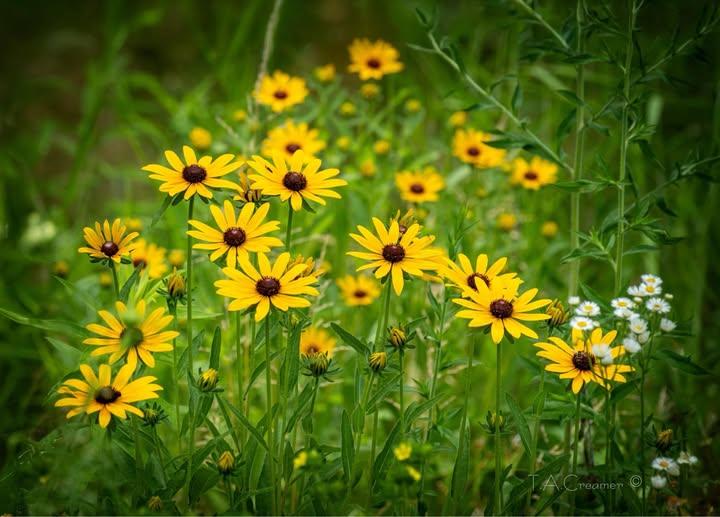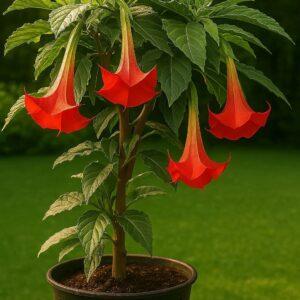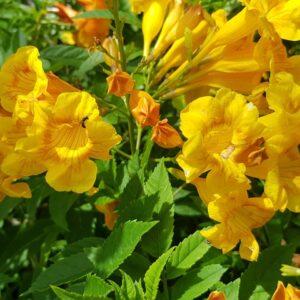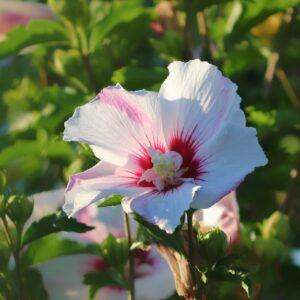The American DaisyThe American Daisy, which is commonly thought of as innocent and straightforward, is a happy, resilient flower that bears lovely white petals with a yellow center. Due to its widespread presence in gardens and lawns throughout the United States, the common daisy (Bellis perennis) is frequently referred to as the American Daisy, even though it is technically native to Europe.
One of the most recognizable flowers in the world is the daisy. Their lovely, bright flowers represent purity and are popular in wildflower meadows, floral arrangements, and cottage gardens. These low-maintenance plants are perfect for both novice and seasoned gardeners.
Overview
Bellis perennis is the botanical term.
Typical names: American daisy, English daisy, Common daisy
Herbaceous perennial plant type (frequently cultivated as a biennial or annual in warm climates)
Mature height: 6–12 inches (15–30 cm)
Distribution: 6–12 inches
Flowers: White petals with a yellow center; some varieties come in pink or red hues
Flowering time: spring through early summer; may rebloom in the fall in colder regions.
💧 Schedule for Watering
Although daisies thrive in moderate, consistent moisture, they don’t like soggy soil:
Newly planted: Water twice or three times a week until established (first four to six weeks).
Water established plants once a week, and more frequently during hot, dry conditions.
Soil inspection: Allow the top inch of soil to dry out between waterings.
Mulch application: An organic mulch layer aids in moisture retention and weed prevention.
To lessen the possibility of fungal diseases, refrain from immediately watering the foliage.
☀️ Temperature and Sunshine
USDA zones 4–8 are considered hardy zones since they can withstand mild frosts.
Optimum temperature range: 15–25°C (59–77°F)
Demands for light: full sun to bright partial shade
For strong blooming, at least six hours of direct sunlight per day is optimal.
Midsummer heat can be harsh on daisies in really hot weather. Afternoon shade can extend the blooming period.
Needs for fertilizer and soil
Although daisies aren’t picky about soil, they thrive in:
Loamy, well-drained soil
The pH ranges from moderately acidic to neutral (6.0 to 7.0).
Having compost or organic materials added
Advice on Fertilizing:
At planting: Incorporate compost or a slow-release granular fertilizer into the ground.
Feed with a balanced liquid fertilizer (e.g., 10-10-10 or 5-10-5) once a month throughout bloom season to promote additional blooms.
Don’t over-fertilize, as this might encourage luxuriant foliage at the expense of blooms.
Maintenance and upkeep
Regular attention is beneficial to American daisies, but they are simple to care for:
Deadheading: Regularly remove spent blossoms to encourage continuous flowering.
Separating clumps: To avoid overcrowding and revitalize development, divide mature clumps every two to three years in early spring or fall.
Pruning: Trim back plants after they bloom if they seem leggy, or to promote another bloom in colder climates.
Pest resistance: Typically resistant to deer and rabbits, but may sometimes attract aphids, slugs, or powdery mildew. If necessary, use neem oil or insecticide soap to treat.
🌸 Propagation Methods
The propagation of daisies is simple via seeds, division, or cuttings.
From seed:
In the early spring or fall, plant seeds directly in the garden.
Keep wet while just covering with dirt.
It takes ten to twenty days for seeds to germinate.
The blooming season usually starts the next season if the plant is grown outside.
Via division:
Dig up a bunch in early spring or following blooming and break it up into smaller bits.
Water thoroughly and replant at the same depth right away.
Cuttings (less frequent):
In the spring, harvest 3–4 inch stem tips.
In moist potting mix or perlite, root under indirect light.
🌼 Uses in Landscaping
American daisies are adaptable and work nicely in a variety of garden layouts.
Gardens in cottages
edges and boundaries
Wildflower fields
gardens in containers
Pollinator-friendly beds draw in bees, butterflies, and other helpful insects.
When given time to naturalize, they also make excellent ground cover by spreading through runners.
Cautionary Remarks Regarding Invasiveness
Bellis perennis has the potential to spread rapidly in certain places. Although it is not listed as a harmful weed, gardeners should keep an eye on its spread and divide clumps on a regular basis to regulate its growth.
✅ Summary
American Daisies are lovely, hardy plants that give every garden a sense of innocence and joy. They represent joy and genuine beauty with their traditional white petals and golden centers. They are perfect for gardeners of all levels, from beginner to experienced, because of their ease of maintenance, drought resistance after establishment, and abundant flowers. American daisies are a classic complement to any bright garden, whether they are placed in flower beds or planted in expansive drifts.”
Exotic Plant, Ground cover
American daisy
₨399.00
“The traditional wildflower known as the “”American Daisy”” is native to North America and frequently includes species such as the “”Oxeye Daisy”” (*Leucanthemum vulgare*) and “”Black-eyed Susan”” (*Rudbeckia hirta*). Its cheerful, daisy-like flowers with brilliant yellow petals and a central dark disc are well-known for bringing a ray of sunshine to gardens and meadows. These hardy perennials blossom from late spring through fall in full sun and well-drained soil. Once planted, American Daisies are low-maintenance, drought-resistant, and attract pollinators like bees and butterflies. They are ideal for organic environments, borders, and cottage gardens. They are beloved by gardeners because of their simplicity and allure.
“
Categories: Exotic Plant, Ground cover
Tags: #AmericanDaisy, #BellisPerennis, #DaisyAesthetic, #DaisyArt, #DaisyBloom, #DaisyBouquet, #DaisyCare, #DaisyCharm, #DaisyClipart, #DaisyCrafts, #DaisyCutFiles, #DaisyDecor, #DaisyDesign, #DaisyEphemera, #DaisyFavorTags, #DaisyField, #DaisyFlower, #DaisyGarden, #DaisyGiftTags, #DaisyGroundCover, #DaisyIllustration, #DaisyInBloom, #DaisyInspiration, #DaisyInSpring, #DaisyInSummer, #DaisyJournaling, #DaisyJoy, #DaisyLabel, #DaisyLove, #DaisyLovers, #DaisyMagic, #DaisyMood, #DaisyPartyTags, #DaisyPatch, #DaisyPerennial, #DaisyPhotography, #DaisyPlant, #DaisyPrintables, #DaisyScrapbooking, #DaisySeason, #DaisySeeds, #DaisyStationery, #DaisySticker, #DaisySVG, #DaisyTags, #DaisyTheme, #DaisyVibes, #DaisyWeddingTags, #WhiteDaisy, #WildDaisy
Be the first to review “American daisy” Cancel reply





Reviews
There are no reviews yet.